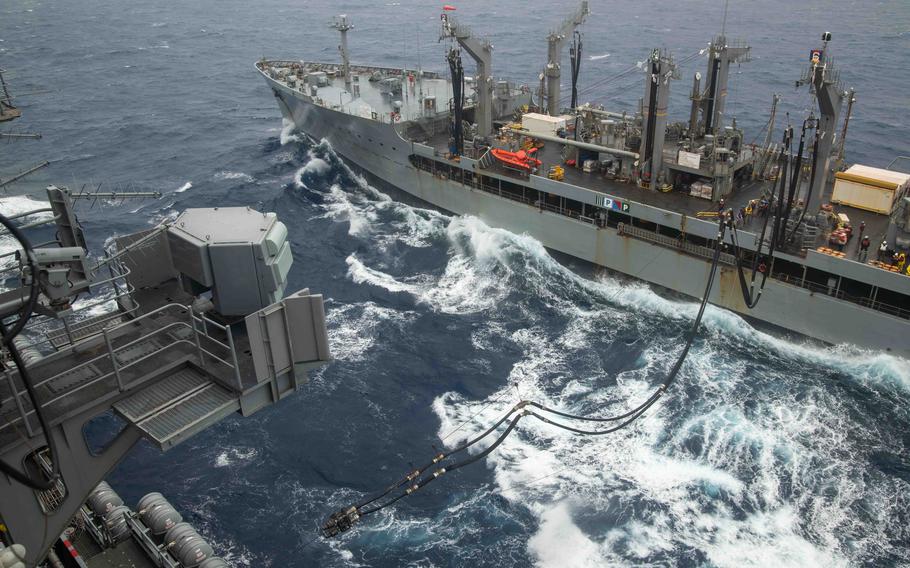
Military Sealift Command will look to attract and retain workers in the next two years by focusing on keeping consistent work and time-off schedules to ensure mariners have a work-life balance. The command is also seeking reforms to pay caps to offer higher wages that attract for more mariners. (Kevin Steffanson/U.S. Navy)
WASHINGTON — The Military Sealift Command is rolling out an initiative to improve mariner recruiting and retention as hundreds of unfilled jobs at sea have forced the command to sideline 17 ships.
The command’s efforts to attract and retain workers in the next two years will focus on keeping consistent work and time-off schedules to ensure mariners have a work-life balance. The command is also seeking reforms to pay caps to offer higher wages that will attract more mariners.
“The overarching goal of the workforce initiative is to rebuild mariner trust and improve quality of service. To do this, [Military Sealift Command] is focused on four things: retention, recruiting, quality of service, pay reform, and HR policies and systems,” Rear Adm. Phillip Sobeck, commander of the Navy’s Military Sealift Command, said Thursday.
In October, the Military Sealift Command announced it was looking to sideline 17 ships with hopes it would address the workforce shortage crippling its logistics fleet. Sobeck confirmed Thursday that the command is moving forward with that plan as part of its new workforce initiative.
The Military Sealift Command operates about 125 civilian-crewed ships responsible for a range of tasks, such as resupplying Navy ships, transporting combat cargo at sea and conducting specialized missions. But the command is having trouble attracting and keeping workers due to high operational tempo, delayed reliefs, extended deployment time and mandated pay caps, Sobeck said.
“We are just not competitive,” he said.
About 5,600 civilians fill 4,500 billets across the Military Sealift Command. It follows a 1.22 model, where for every 100 mariners on a ship, there should be 22 mariners on shore. That model, Sobeck said, is unsustainable. The command is looking to achieve a 1.4 model by 2026 and eventually, a 1.7 model.
The 17 ships will be moved into an extended maintenance period or, in some cases, deactivated. Sobeck said he could not identify specific ships because the fate of some ships could change. He said if or when any of those ships rejoin the fleet is yet to be determined.
“It really is about getting after our retention. So, as those mariners start coming back and we start building the bench is when we will bring ships back as they finish up their extended maintenance,” Sobeck said.
Taking 17 ships offline will free up about 800 mariners, who will be reassigned to higher priority ships, such as fleet replenishment oilers, dry cargo and ammunition ships, expeditionary fast transports and expeditionary sea bases.
“Higher priority ships will be fully manned and mission capable. Bringing consistency to that force is paramount,” Sobeck said.
Still, the command needs to fill 800-1,000 jobs to meet the 1.4 model and achieve 95% readiness across its fleet, he said.
“There’s currently a critical shortage across the U.S. civilian mariner landscape that certainly affects our ability to crew our combat logistics fleet and the other [government-owned, government-operated] ships and our ability to fully generate ready forces,” Sobeck said.
The initiative is meant to help the Military Sealift Command regain mariners’ trust. Sobeck said he hopes the change will get the workforce healthy and back to what it means to be a Military Sealift mariner — the ability to sail across the spectrum of ships and grow in their field while being paid competitively.
“We have done career fairs, we have done other things, but we haven’t been competitive in the last couple of years,” he said. “Rebuilding that and that relationship, I believe, is the winning solution.”